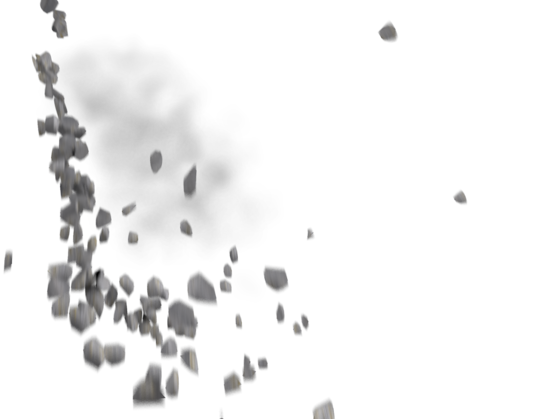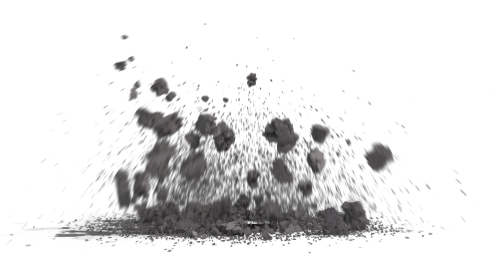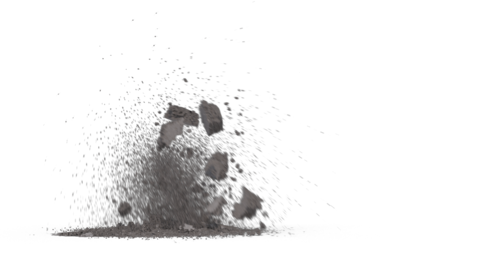Download top and best high-quality free Debris PNG Transparent Images backgrounds available in various sizes. To view the full PNG size resolution click on any of the below image thumbnail.
License Info: Creative Commons 4.0 BY-NC
Debris refers to the scattered remains of something that has been broken or destroyed. Debris can take many different forms, including rubble, wreckage, and fragments.
Types of Debris
Debris can come in various types, depending on the circumstances of its creation. One of the most common types of debris is construction debris, which includes waste material from building sites like bricks, wood, cement, and steel. Household debris can come from domestic waste, such as food, plastics, and paper. Natural disasters like hurricanes, earthquakes, and tsunamis can create a lot of debris. The aftermath of a car accident can also result in debris that must be cleaned up.
Environmental Impacts of Debris
Debris can have significant negative effects on the environment. Huge amounts of debris can be harmful to wildlife, ecosystems, and water sources. When debris ends up in the ocean, it can be consumed by marine animals, and it can cause damage to coral reefs, harming the natural habitat of marine life.
Natural disasters can cause significant landscape changes, which can increase the risk of landslides and floods. The debris from these events can block drainages, exacerbating the impact of floods and causing long-term damage to ecosystems and infrastructure.
Debris also has the potential to pollute the air and water we consume, leading to health problems. In addition, debris can cause transportation disruptions, which can limit people’s access to vital necessities, such as food, water, and medical services.
Debris Management Strategies
Effective debris management strategies are essential to mitigating the negative effects of debris. To address the problem of debris, we need to reduce its creation in the first place, reuse it as much as possible, recycle what cannot be reused and properly dispose of any remaining debris that cannot be recycled.
One of the most effective ways to minimize debris is to design more sustainable products and materials. This will help organizations reduce the amount of debris created and ensure that waste is eliminated in the most responsible way possible.
Another approach is to implement debris segregation and recycling programs in communities and at construction sites, where waste materials can be sorted and appropriately disposed of or reused.
Finally, community-based efforts like targeted clean-up drives, awareness campaigns, and motivational activities can help in providing a clean living environment while also educating people on responsible waste management practices.
debris can present serious environmental, social, and health risks. Reducing its impact requires the collective efforts of individuals, communities, and organizations. By minimizing debris generation, promoting sustainable production practices, and properly managing waste disposal, we can create a cleaner environment for ourselves, other living organisms, and future generations.
Download Debris PNG images transparent gallery
- Debris PNG Photos
Resolution: 552 × 419
Size: 381 KB
Image Format: .png
Download
- Debris PNG Pic
Resolution: 512 × 443
Size: 14 KB
Image Format: .png
Download
- Debris PNG Picture
Resolution: 498 × 280
Size: 100 KB
Image Format: .png
Download
- Debris PNG
Resolution: 500 × 500
Size: 308 KB
Image Format: .png
Download
- Debris Transparent
Resolution: 1742 × 980
Size: 750 KB
Image Format: .png
Download
- Debris
Resolution: 800 × 569
Size: 285 KB
Image Format: .png
Download
- Debris No Background
Resolution: 512 × 512
Size: 23 KB
Image Format: .png
Download
- Debris PNG Clipart
Resolution: 498 × 280
Size: 103 KB
Image Format: .png
Download
- Debris PNG Cutout
Resolution: 300 × 300
Size: 118 KB
Image Format: .png
Download
- Debris PNG File
Resolution: 720 × 141
Size: 100 KB
Image Format: .png
Download
- Debris PNG HD Image
Resolution: 498 × 280
Size: 82 KB
Image Format: .png
Download
- Debris PNG Image HD
Resolution: 498 × 280
Size: 41 KB
Image Format: .png
Download
- Debris PNG Image
Resolution: 3840 × 2160
Size: 814 KB
Image Format: .png
Download
- Debris PNG Images
Resolution: 360 × 360
Size: 241 KB
Image Format: .png
Download
- Debris PNG Photo
Resolution: 498 × 280
Size: 33 KB
Image Format: .png
Download
